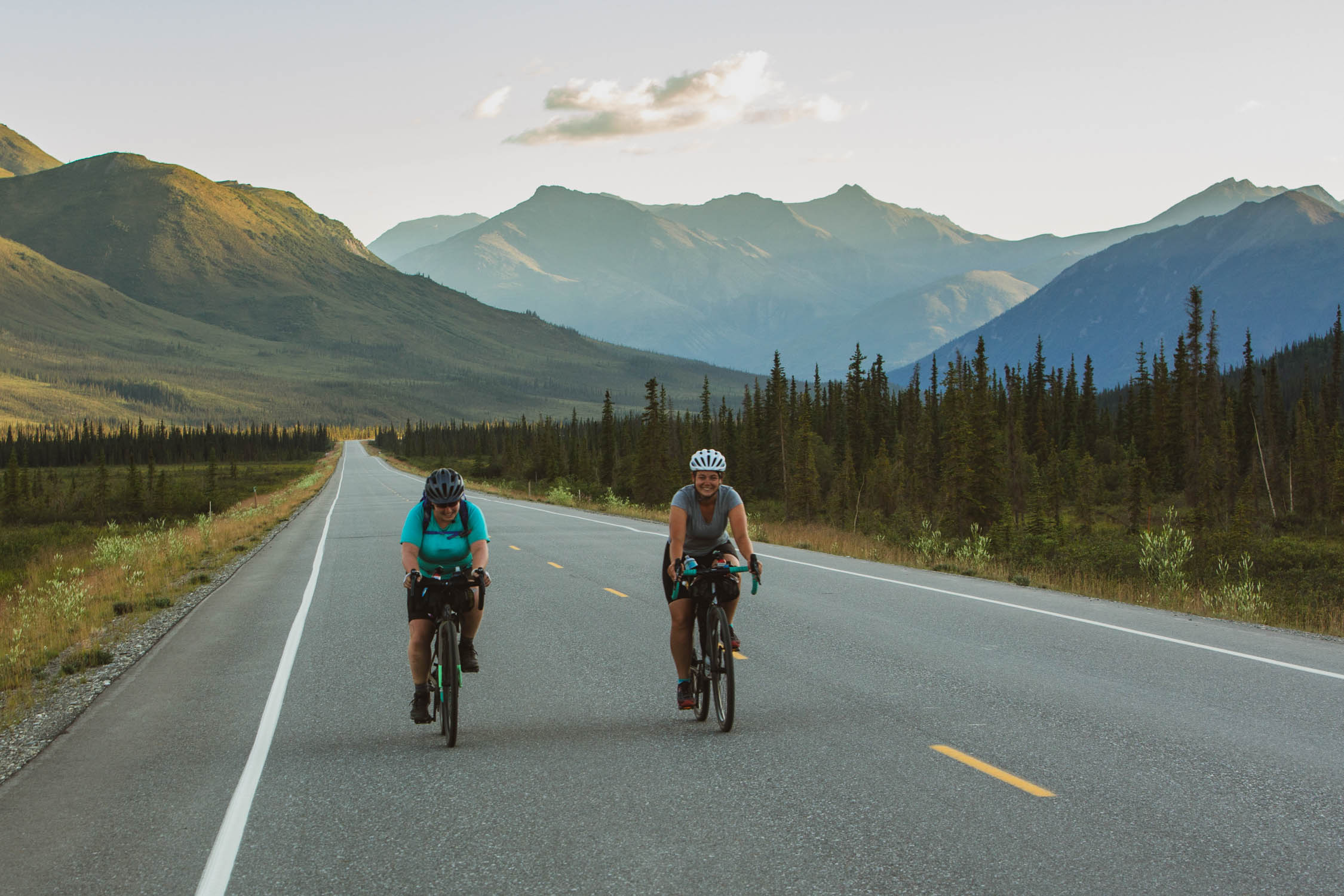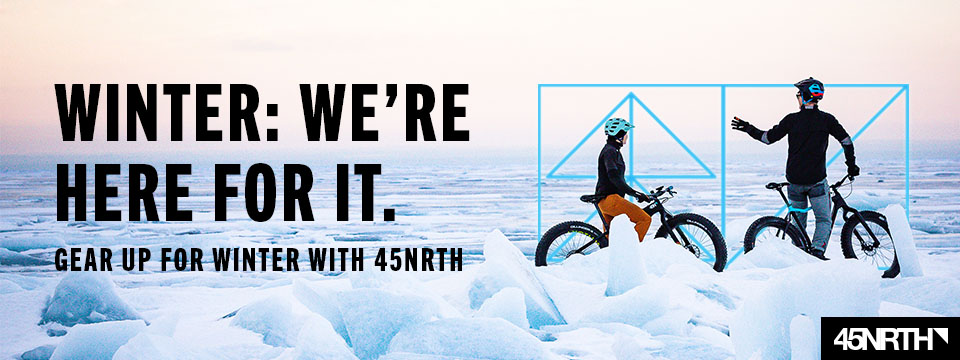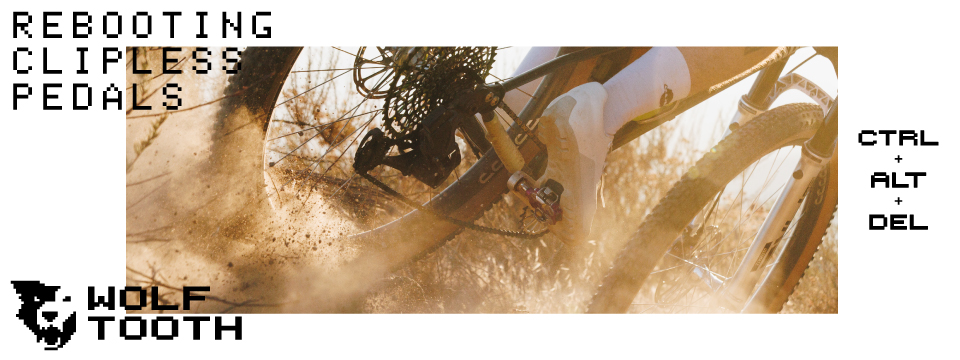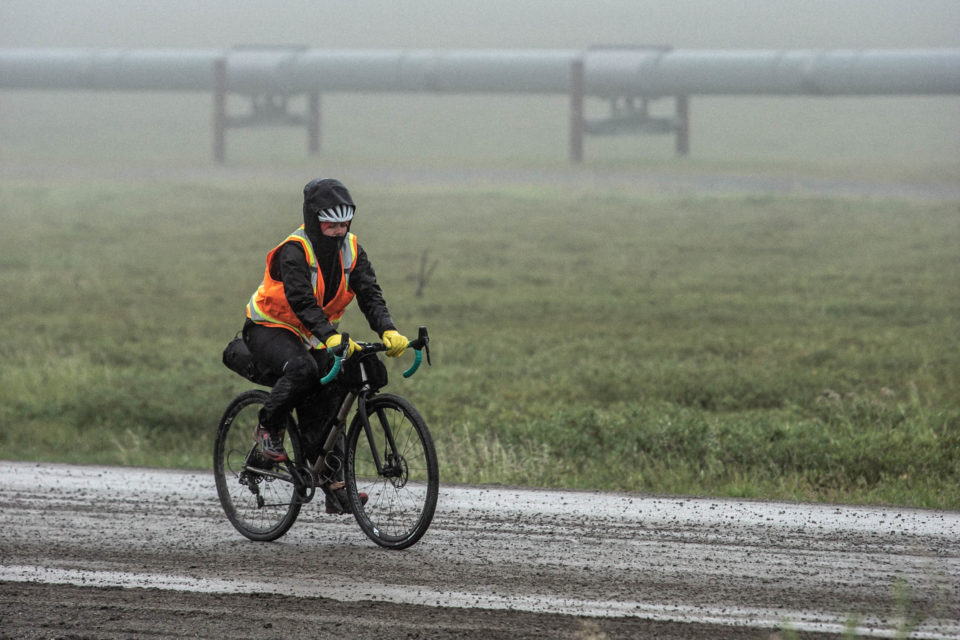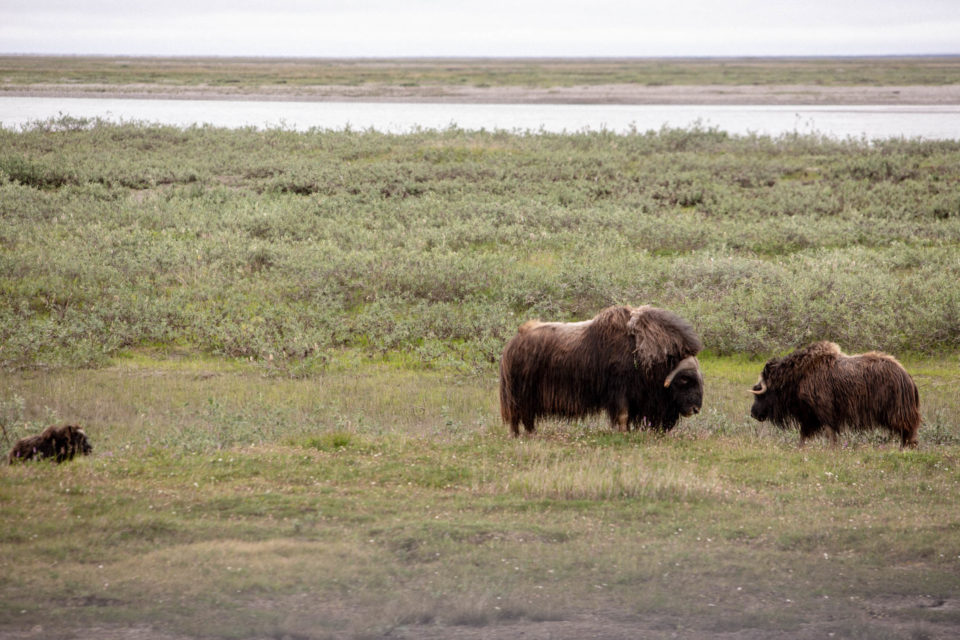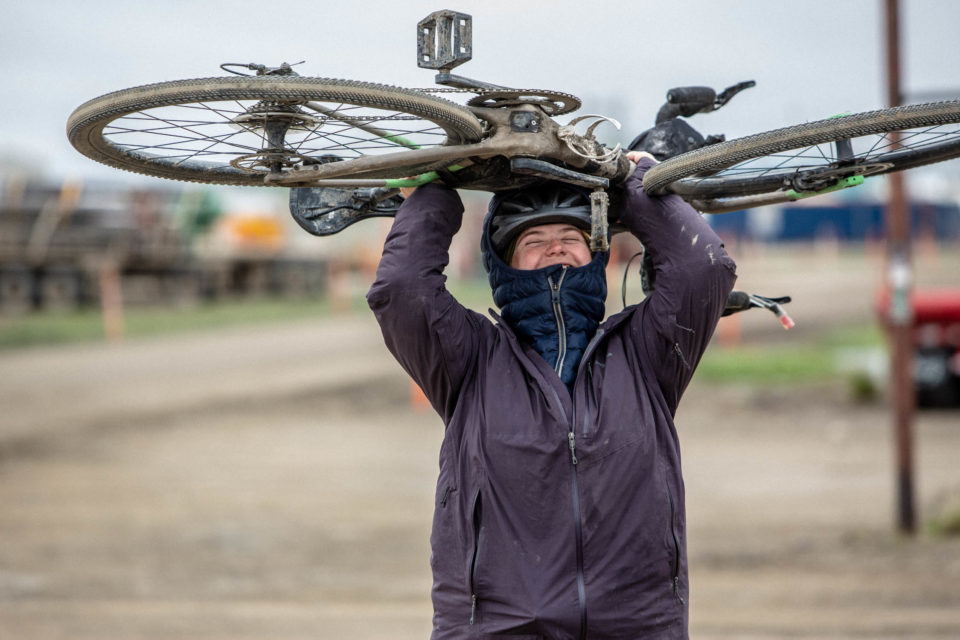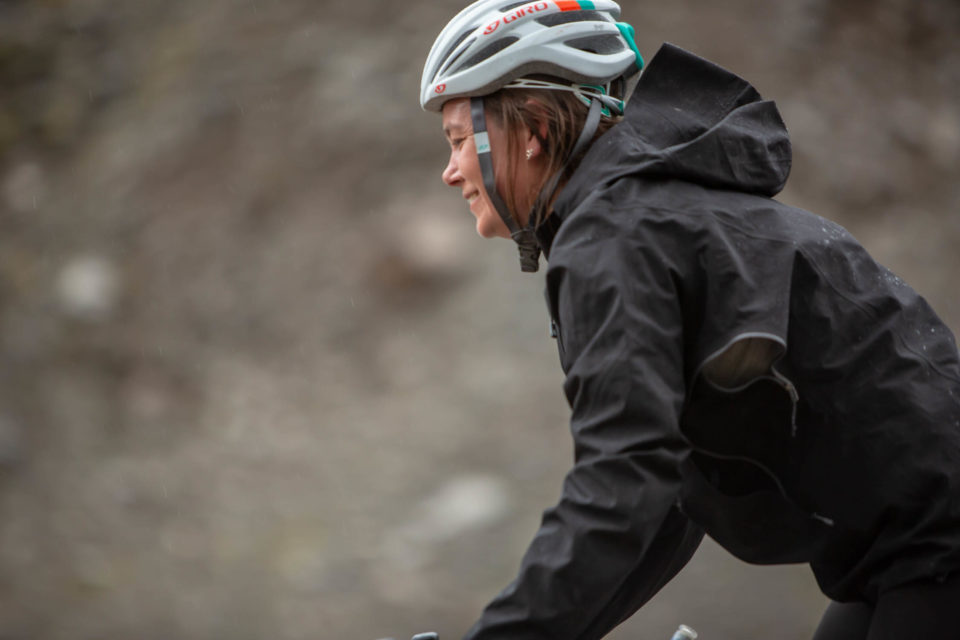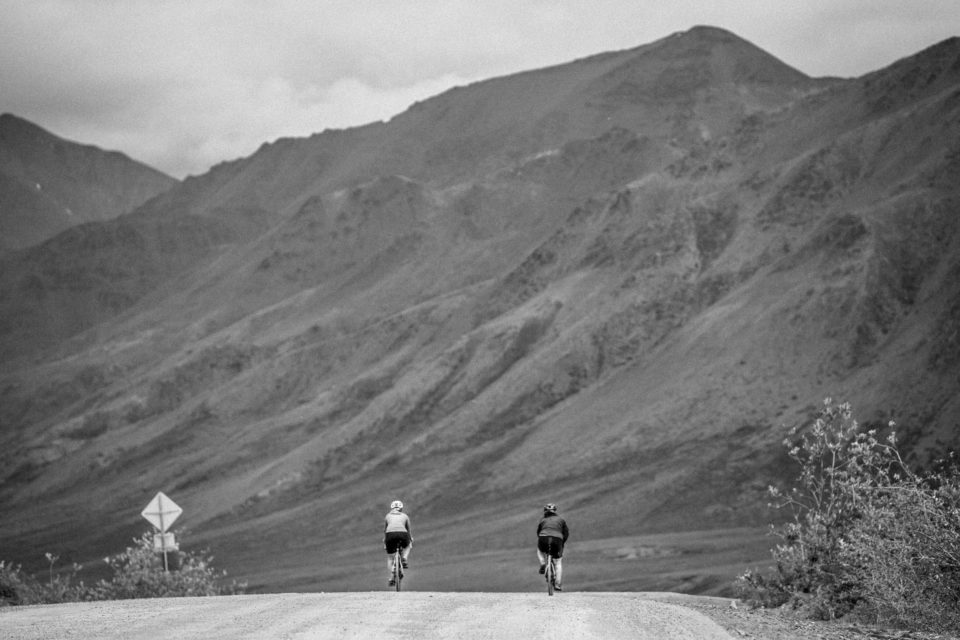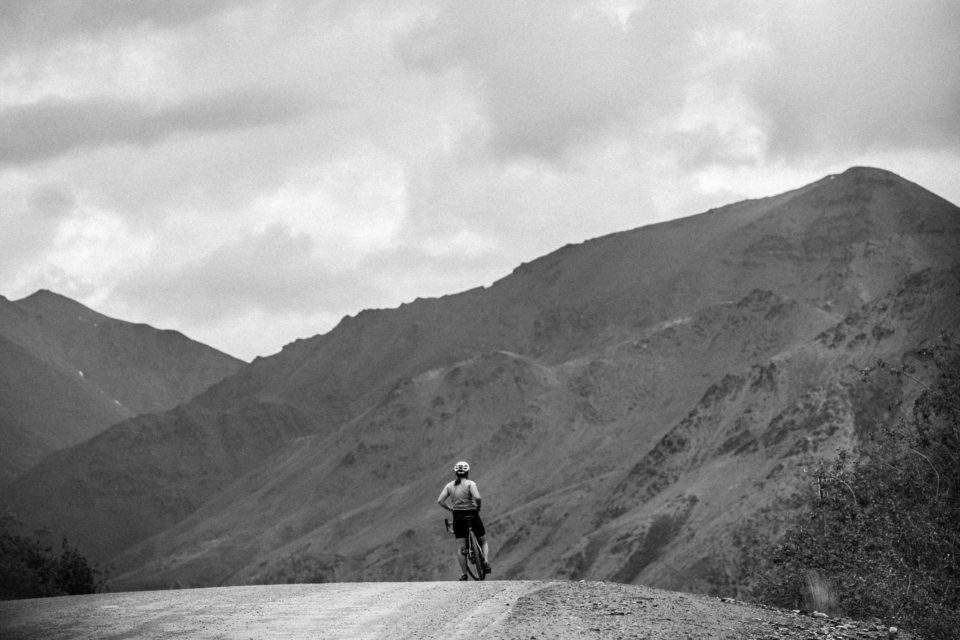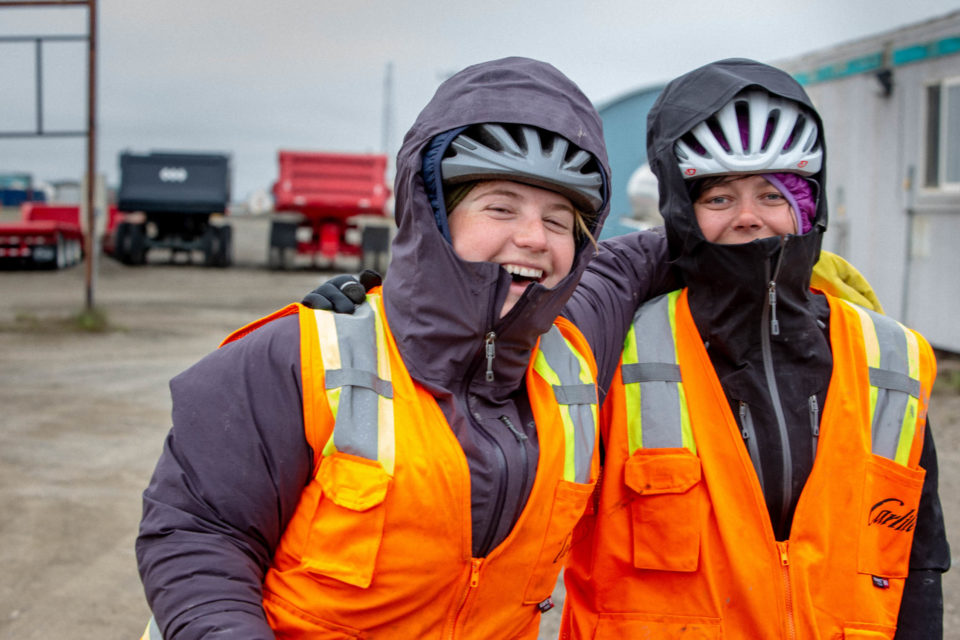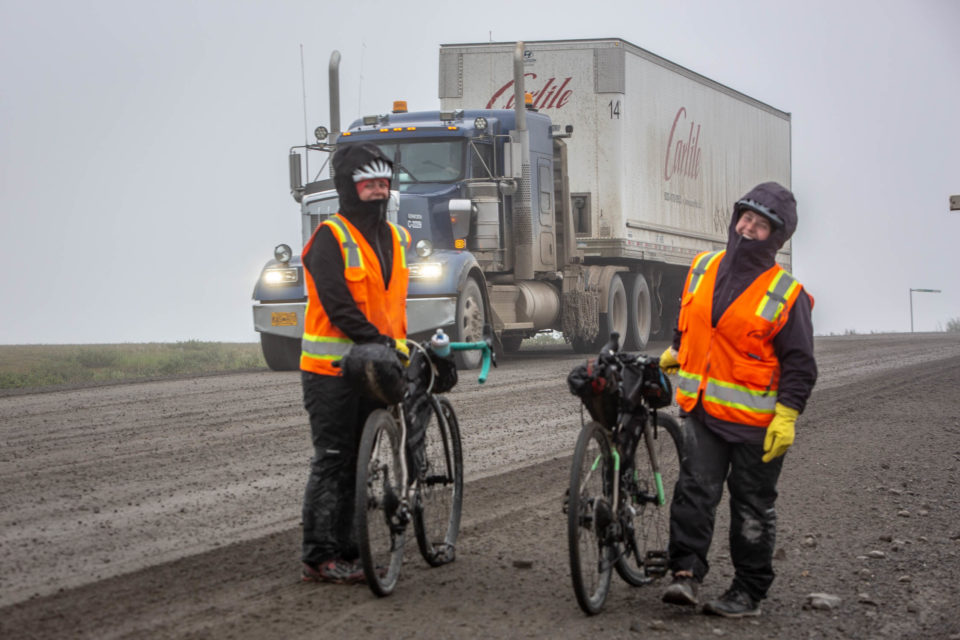Pedaling Through a Changing Climate
As recipients of the 2018 Lael Rides Alaska Women’s Scholarship, Brooke Larsen and Kailey Kornhauser crafted a 1,000-mile ride from Seward to Deadhorse, Alaska. They didn’t just ride their bikes, though. They also listened to stories about climate change and fossil fuel extraction along the way. Read on for their story of finding gratitude and hope while pedaling through the far north…
PUBLISHED Dec 17, 2018
Words by Brooke Larsen (@jbrookelarsen) and Kailey Kornhauser (@kornhausersauce), photos by Galen Knowles (@gknowproductions)
On a late-July morning, we woke up in a trailhead parking lot ten miles from the Dalton Highway. We slept on pavement because seasonal thawing permafrost made the surrounding earth swamp-like. As we packed our gear for the most strenuous part of our 1,000-mile ride across Alaska, a tour van full of Australians pulled into the parking lot. They were headed to the Arctic Circle, about 200 miles north. They would drive there and return to Fairbanks in one day. We would take four days to just reach the Arctic Circle.
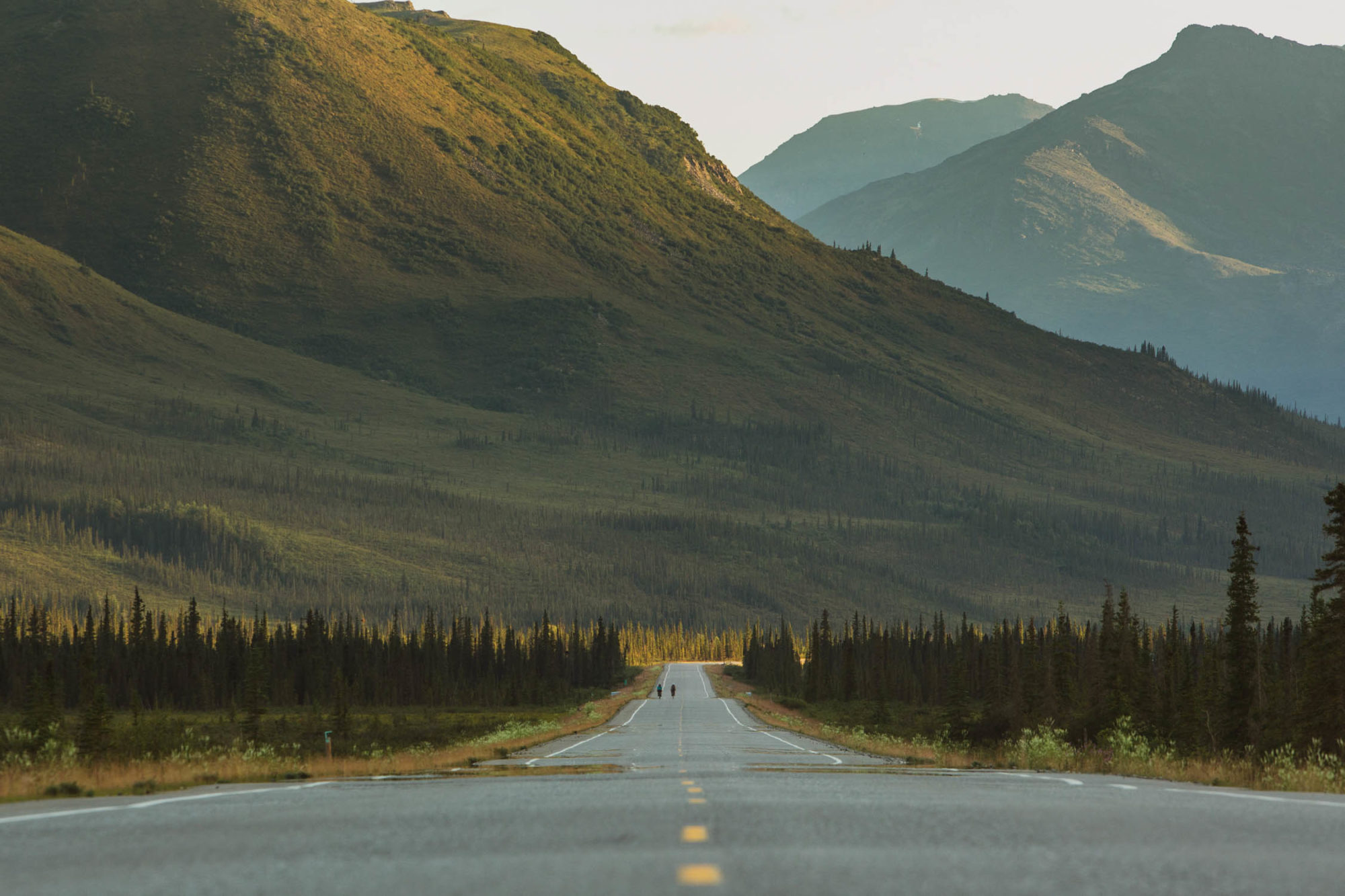
“Deadhorse,” we replied.
“You’re going to be dead when you get there!”
We laughed, but also felt like we could do without the negativity. The tour guide—a big, white man—then shared some advice.
“You know the road is real rugged up there, right?” he questioned in a skeptical tone.
We responded with a short, “Yep.” We had done hours of research on the remote, gravel road and just biked 600 miles across the state. We were as prepared as two super amateur bikepackers could be.
“Where you from?” he asked.
“Salt Lake City, Utah,” we replied.
“The Dalton is real mountainous,” he responded as if we’d never seen a mountain before.
“Yeah, we know. And there are mountains in Utah.”
When his warnings about the terrain didn’t scare us, he then criticized our gear packing.
“Well, you can’t sprawl out like this up there. There’s bears.”
“Yep.”
We had been biking across the state for the past month with a lightweight set up. We knew there were bears and we didn’t have enough gear to “sprawl out.” We also had little patience for doubters.
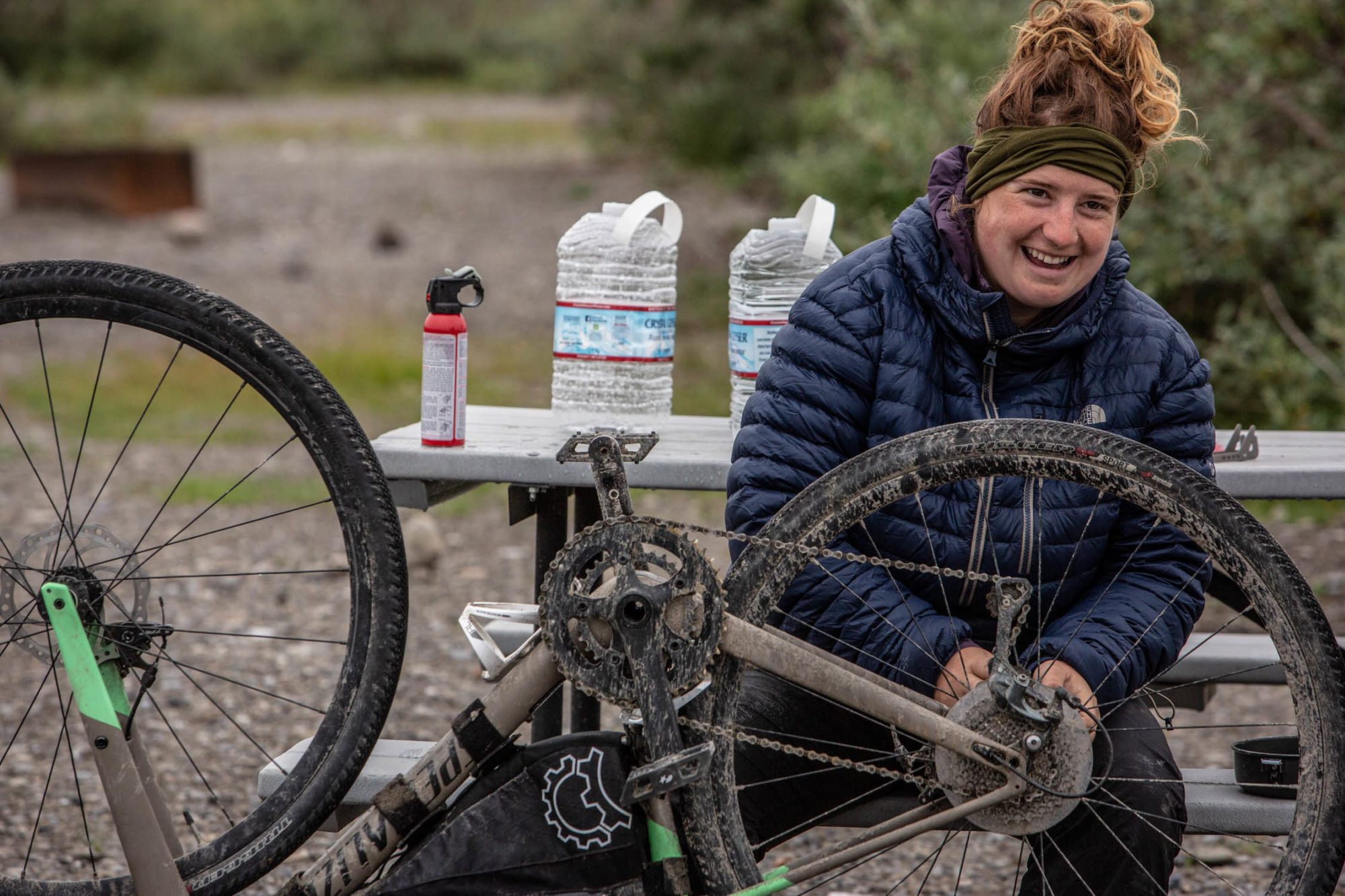
Shortly after the mansplainer left, a woman tour guide pulled up and offered us donuts with words of encouragement. Luckily, during our time in Alaska, we interacted with many more kind people than misogynists. But the few bad interactions reminded us why Lael Wilcox’s scholarships are so important—they empower women cyclists in a sport and world still dominated by men.
We—two best friends who met while bike commuting up steep hills to grad school—spent the summer of 2018 pedaling 1,000 miles across Alaska as the recipients of the Lael Rides Alaska Scholarship. We were drawn to the scholarship as a way to grow as women bikepackers, but also to learn about a place on the frontlines of climate change.
We mapped a route that would take us to places and people experiencing the impacts of a warming world, starting in Seward on Alaska’s southern coast and pedaling all the way north to Deadhorse on the Arctic Ocean. We learned that Alaska is, as Anna Stringer of Alaska Youth for Environmental Action told us, “an environmental paradox.” While coastal communities erode from rising seas and melting ice, the state receives an average 85 percent of its revenue from the oil industry.
MANAGING STRAPS AND EXPECTATIONS
The day before we started biking, we went on a different type of tour: a nine-hour boat ride to Northwestern Glacier. As our boat crept through dense fog, vibrant blue glacial ice began to appear, emanating an unnaturally loud crack. Giant pieces of the tidewater glacier fell into the ocean, producing waves that rocked seals atop icebergs. Our guide, Jena, showed us photos on her cell phone. During the seven years she has worked on the boat, she has taken a photo of the glacier almost every day. She pointed to areas of rock that used to be ice, and told us, “My glacier is melting away every day. Don’t tell me that climate change doesn’t exist.”
We biked away from Seward with an understanding that our journey would require us to not only balance the physical demands of a long bike tour, but also the emotional turmoil of witnessing climate change in real time.
The next day, rain poured down as we started the 80-mile ride to Anchorage. We tied plastic bags around our feet and pulled on dishwashing gloves to keep our feet and hands relatively dry. We felt nervous as we climbed up Turnagain Pass and sailed down the wet highway shoulder with trucks zooming past. Eventually we reached a flat stretch and the rain stopped. Our spirits rose as we realized we were doing it—we were biking across Alaska. Thirty-five miles out of Anchorage, we pulled into a roadside gas station for food. As we scarfed slices of pizza, a man approached us to ask where we were headed. We told him we were biking north to Deadhorse. He looked surprised and said, “Wow, you’re brave.” We laughed nervously and responded in unison, “Or stupid.” He offered back, “No, brave.”
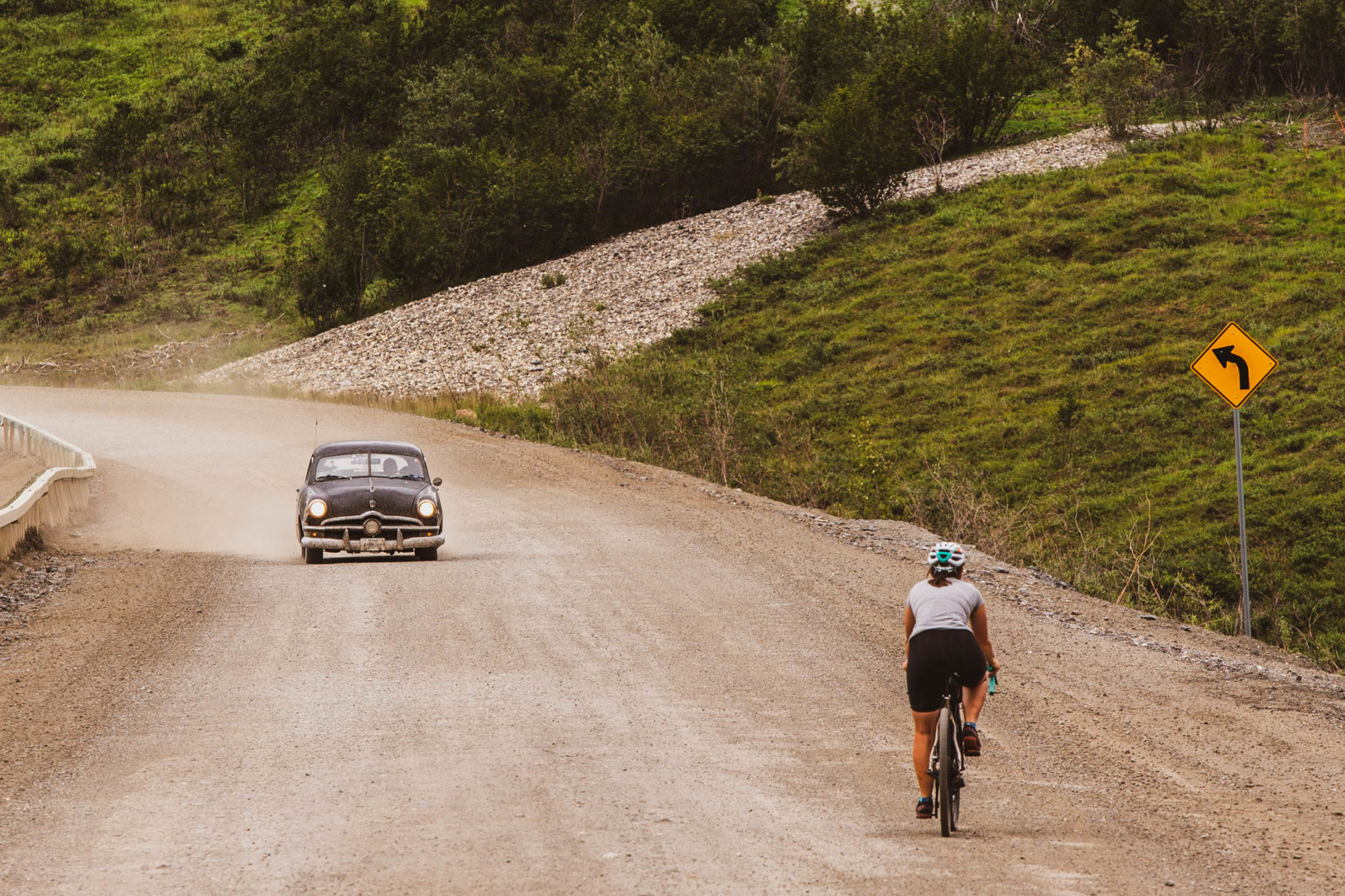
WELL FED
After completing the first stretch of our ride, we spent a few days in Anchorage preparing for the miles ahead, meeting with environmental groups, and connecting with the local cycling community. We stayed with generous hosts, Patrick McGownd and Tina Tomsen. Since retiring, Patrick has filled his time by supporting local bike races and teaching hot yoga. Tina works as a gynecologist at a local women’s clinic she helped found. When Patrick learned about Lael’s scholarship, he offered to host us in Anchorage.
Patrick and Tina did much more than just give us a place to rest our head, though. They made sure we were well-fed during our entire stay, taking us out to tasty restaurants in town and cooking us meals with eggs from their chickens, veggies from their garden, and salmon caught the previous summer. Patrick drove us around town, from bike shops to get last minute gear to the post office to mail food packages. We visited Revelate Designs to meet Holly Hill and the Bicycle Shop to meet Christina Grande, two rad women bikepackers who helped us figure out the ideal set up so we only heard the awful sound of bag rubbing against tire a couple super bumpy times in the weeks ahead.
INTO THE WILD
After our stay in Anchorage, we biked through Denali country on the scenic Park Road. We spent a few days at the national park, staying in a yurt offered to us by David Tomeo, the education program director at the Murie Science and Learning Center. Over a meal of home-cooked salmon, David told us about climate change in the park, most notably that as the tree line moves up, Dall sheep habitat decreases. Denali National Park was originally established to protect the Dall sheep.
When we finally arrived to the research site, we hid our bikes in bushes and carefully traversed planks of wood elevated above the uneven, muddy ground. We met with researchers from Northern Arizona University who study the impacts of thawing permafrost. Frozen Arctic tundra serves as a carbon sink, currently storing more than twice the amount of carbon than humans have emitted since the industrial revolution. As temperatures warm, permafrost thaws and emits greenhouse gases. While thawing permafrost escalates global climate change, it also has serious implications for the land and ecology of the Arctic. Drainages will change course and composition, the ground will sink, tree lines will move further up in elevation, and animals will change migration patterns. The people that rely on these lands for subsistence and spirituality will lose their way of life.
Later that night, we set up our tents at a campground connected to the town’s main gas station. We found ourselves in a series of contradictions. Healy is a coal town, but just 35 miles west, Chris McCandless’ old bus sits vacant on ground that’s thawing from human-caused climate change. And we could barely fall asleep because of loud noise from a nearby EDM concert and screaming high school students on a camp trip. We laughed as we tried to fall asleep, feeling we were so far from the wild.
THE FAR NORTH
From Denali country, we biked north to Fairbanks where we loaded up on carbs and reorganized gear to prepare for the Dalton Highway—a 414-mile remote and mostly unpaved road constructed for the Trans-Alaska Pipeline and oil drilling in the Arctic. In between resting and preparing, we interviewed scientists, climate justice activists, and indigenous organizers. Notably, we met with Bernadette Demientieff, the director of the Gwich’in Steering Committee, who educated us about the fight to protect the Arctic National Wildlife Refuge. Proposed drilling would occur on the Arctic Refuge’s coastal plain—critical calving grounds for the porcupine caribou.
A map of the Gwich’in people’s ancestral homelands and the range of the porcupine caribou overlap nearly identically, as the caribou serves as a main food source and central part of Gwich’in culture. Bernadette described the attack on the Arctic Refuge as nothing short of genocide for the Gwich’in people. “This is a human rights issue,” she emphasized.
A few days after we met with Bernadette, we would reach the western edge of the Arctic Refuge. Before we descended into the Arctic tundra, though, we had to navigate through Fairbanks’ construction (the most dreaded conditions while bikepacking), pedal 80 miles on the Elliott Highway, and then climb nearly 21,000 feet on the the so-called rollercoaster of the Dalton Highway. We found that individually named hills were always the steepest. We went up and down high grades for 200 plus miles on mostly unpaved, uneven terrain. As the days wore on, we had to walk halfway up each hill, pushing our bikes with one hand and using the other to swat away gnats and mosquitos.
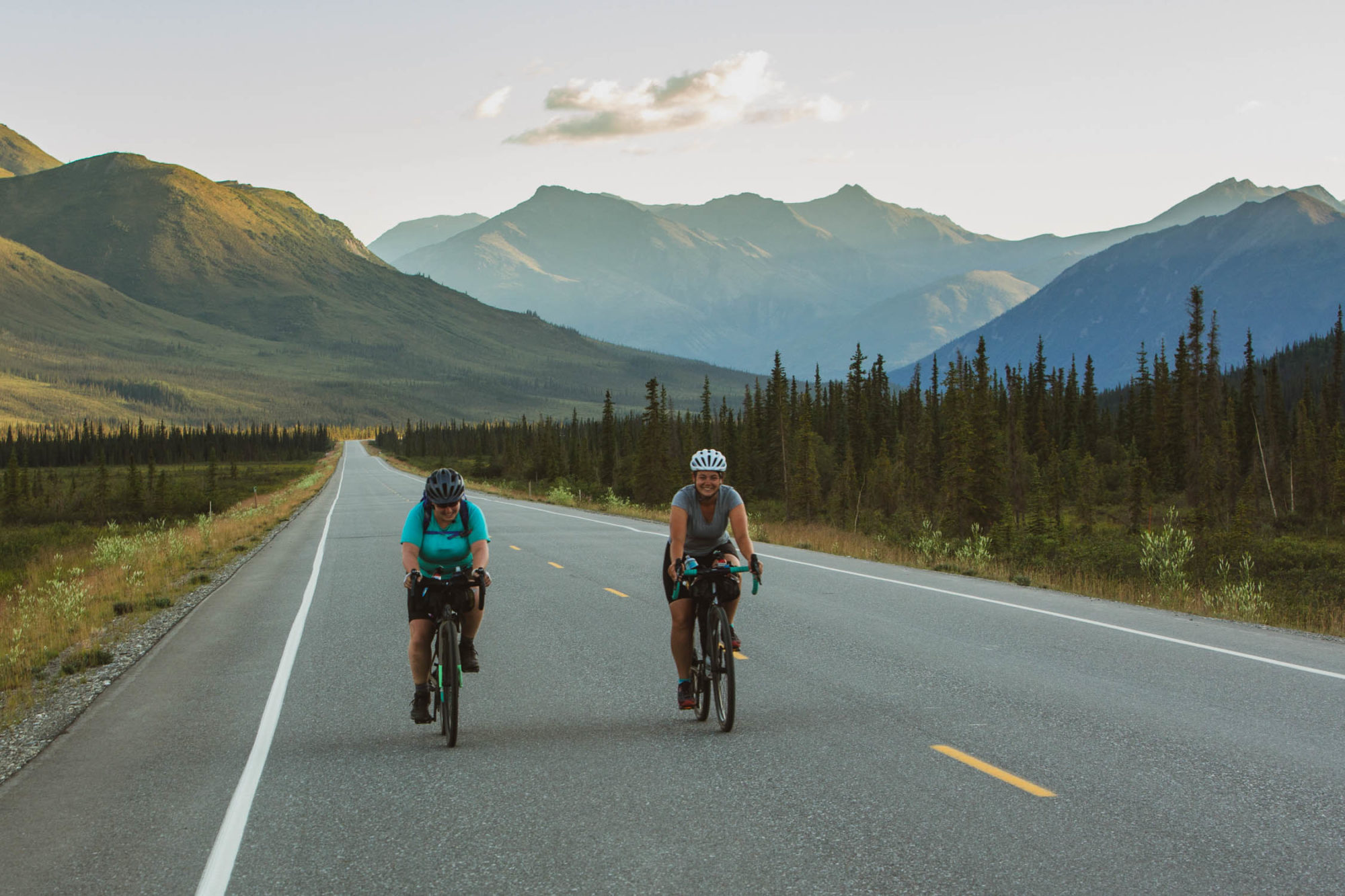
Most often, we took advantage of the endless summer sun, pedaling late into the night and looking for a place to pitch our tent at 10 or 11 p.m. We camped everywhere from truck pull offs near the pipeline to soft tundra surrounded by spruce trees.
We experienced short and sweet moments of relief along the way. We spent a few hours resting at the Yukon River Crossing, stripping off our bike shorts for a cold dip in the mighty river. Near the Yukon, we also met a father and son who were walking the entire length of the Trans-Alaska Pipeline. There’s always someone doing something cooler than you.
The next day, we summited Atigun Pass—the highest highway pass in Alaska—and descended to the Arctic tundra. A dense fog settled as we hit the summit. Rain poured from the thick clouds, making the steep dirt road muddy and slippery. Kailey’s brakes started failing as we made our descent, and wet, cold mud covered us head to toe. Temperatures dropped to the low 30s as the fog limited our visibility to ten feet. Truck drivers tossed us their orange construction vests to help other drivers see us.
We biked past caribou and muskoxen-—an Ice Age-era, bison-like creature with a long, thick coat and curved horns—grazing on tundra plants. The Trans-Alaska Pipeline chugged along a few yards from our pedal strokes and truck drivers carrying equipment for the oil operations in Deadhorse whizzed past. A grizzly roamed in the distance and a red fox with a bird hanging from its mouth ran parallel to us for a half a mile.
When we finally reached Deadhorse after a few miserably cold days of biking, we struggled to feel celebratory. The Prudhoe Bay Oil Field felt like a scene out of an apocalyptic movie. Everything looked gray and dreary, a mess of warehouses and heavy machinery. We felt like we had entered the dark heart of the climate crisis.
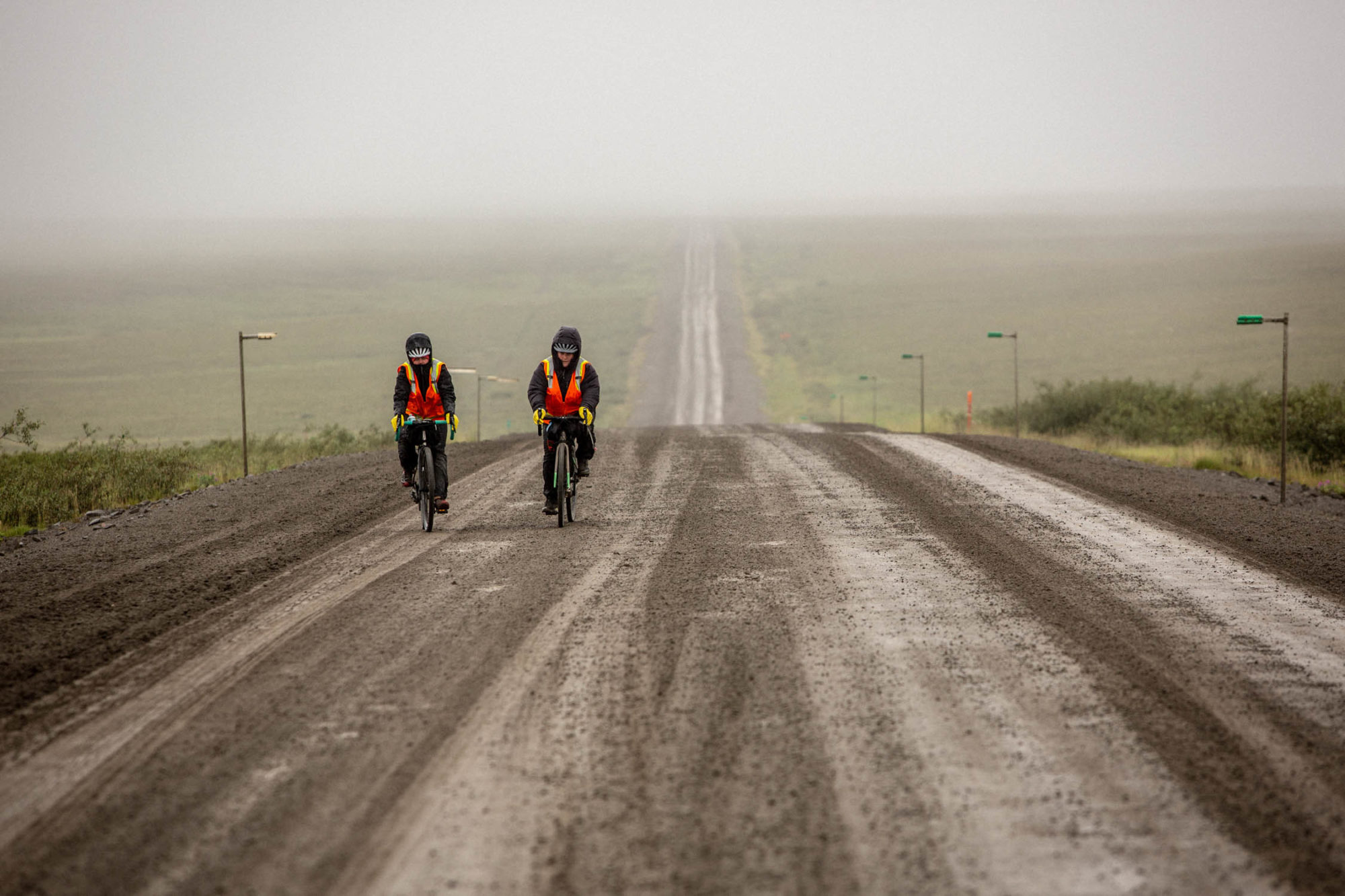
GRATITUDE AND HOPE
After checking into one of the Prudhoe Bay hotels that accommodates transient workers, we ate a heaping meal of mac and cheese, fried chicken, salty chips, buttery rolls, and much-missed fruits and vegetables. For the past week, we had mostly eaten dehydrated meals and PB&Js we made days prior in Fairbanks. As we began feeling a bit more like functioning humans again, I remembered words of hope from Allison Barnwell, the coordinator of Alaska Youth for Environmental Action. She said, “We’re victims of climate change, but we’re doing a lot to try to solve it too. We’re really adaptive people.”
Throughout our ride across Alaska, we found examples of inspiration and hope—from the young people who convinced the governor to create a climate action task force with a dedicated youth seat to the Fairbanks Climate Action Coalition that has organized their community in working groups ranging from renewable energy to interfaith. One scientist told us that Alaskans don’t really have time to grieve the future climate crisis because they feel climate change now. Most Alaskans we met expressed an unrelenting commitment to creating a just transition away from fossil fuels and finding regenerative ways to adapt to a warming world.
The generous, adaptive, and committed nature of Alaskans showed not only in their actions to solve the climate crisis, but also in the ways they supported us in our journey. We experienced daily acts of kindness from truck drivers and tourists who stopped their cars to toss us an apple, a candy, or reflective vests. We developed a motto, “Always take candy from strangers.” We found that bike travel restored our trust in the generosity of people, from those who hosted us with little information other than our names to the construction worker who gave us a bottle of aspirin. Whether the biking got tough or the stories of climate injustices were hard to bear, the people we encountered and the vast wild lands of Alaska continued to lift us up. We ended full of gratitude for the opportunity to grow as women bikepackers and young people concerned about a warming world.
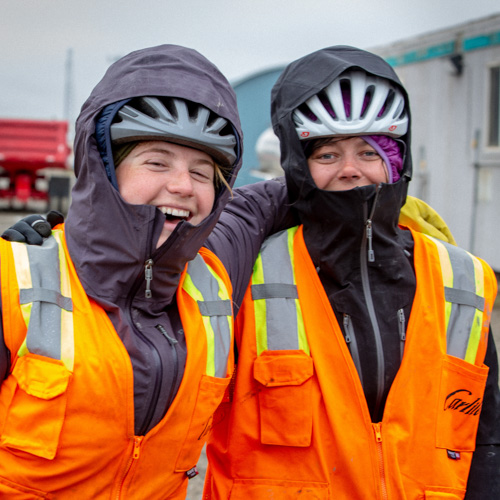
About Brooke and Kailey
As recipients of the 2018 Lael Rides Alaska Women’s Scholarship, Brooke Larsen and Kailey Kornhauser crafted a 1,000-mile ride from Seward to Deadhorse, Alaska. They didn’t just ride their bikes, though. They also listened to stories about climate change and fossil fuel extraction along the way. You can find more from their trip on their website, Short Stories, Long Ride.
Please keep the conversation civil, constructive, and inclusive, or your comment will be removed.







